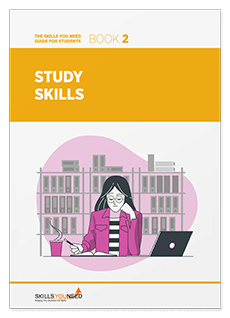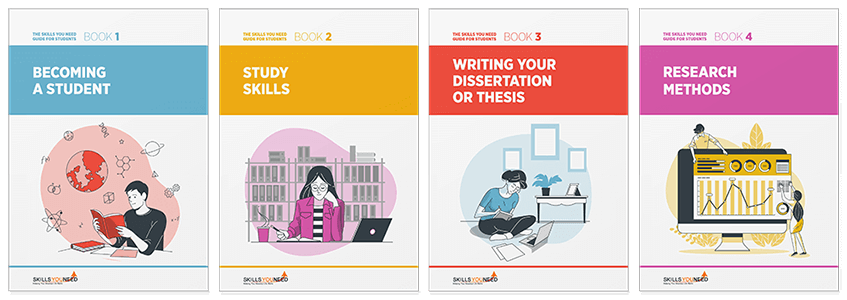The Top Three Tips for Study Success
See also: Study SkillsAs a student, one of the most important skills to have, develop, and continually improve is how to study. Studying is more than just memorizing important information; when done correctly, it’s so much more.
You’re building a foundation and then building on that foundation of knowledge, setting yourself and your brain up to be able to retrieve information for years to come. In some fields, what you learn for your exams may or may not have direct practical application in your chosen field. It is possible that not every tidbit of information will be essential to your daily work.
However, if you’ve chosen to enter the medical field, for example, you definitely will need to be able to recall copious amounts of information at the drop of a hat.
The knowledge you gain throughout medical school, during residency, and throughout your career is all (hopefully) built on a solid foundation of foundational science. Starting from the beginning – with a topic such as basic human anatomy – what you learn only continues to build upon itself as the systems of the body are all interconnected. Being able to spontaneously recall tidbits of information you may not have encountered since you studied for the USMLE Step 1 is part of the job. You never know what issues your patient will have and how these may be connected to their medical history or factors outside of their control. Thus, it’s vital to have a well-rounded knowledge base.
If you’re a med student, you’re in the perfect position to start building and refining your knowledge base. Using the following study techniques, you will be able to better recall, understand, and perform when it comes to exams and patient care.
Active Learning
Regardless of what topics you’re studying or in which field, practicing active learning is a habit that every learner should make part of his or her routine.
When you study, do you consistently ask yourself questions about the material, or do you just watch a video or read a reference book and think “oh of course I will remember this”? Well, unless you have a photographic memory, any information you’ve reviewed passively will probably not stick. Active learning slightly increases your engagement with the material and encourages you to put new information in context.
Practicing active learning is as easy as doing three small self-check-ins: one before, one during, and one after your study session.
Before you start your study session, think about the topic you’re going to review. Do you already know anything about this subject? What do you expect or need to learn during this study session?
During your study session, think about what you’re learning in a broader context. How does this new information fit into your existing knowledge base? Does this seem to clarify any points from previous study sessions?
After your study session, give yourself a few minutes to review everything you learned. What did you not understand/what should be revisited? What did you learn during this study session? How might this be tested in the future?
Spaced Repetition
Related to active learning is the idea of spaced repetition. This study technique, in essence, includes reviewing material at increasing intervals based on your confidence of knowledge and accuracy of knowledge. If this sounds a lot like reviewing flashcards, then you may have already used this study method yourself!
The difference between simply reviewing flashcards and using a platform with a built-in spaced repetition algorithm is when exactly this information comes back to you. And unlike simply reviewing flashcards, in which your focus might not be 100% on the material that you’re struggling with, spaced repetition places emphasis on the material that you need the most help with.
Of course, the information you know also comes back up for review, but at less frequent intervals. Furthermore, spaced repetition can be adapted to your performance over time – especially if you’re using a platform that includes a spaced repetition-like algorithm built into its review tools – so that when you are able to recall information that was previously challenging, the intervals between repetitions gradually increase as well.
Problem-Based Learning
You’ve learned new material, and have reviewed the basics over time with spaced repetition… but in the context of medical studies, what comes next?
As a future medical professional, you not only need to be able to rattle off facts about specific diseases or treatments, but you also need to be able to apply what you’ve learned in patient contexts. Of course, part of your medical training involves (or will involve) actually interacting with patients and working in a clinical setting; however, before you get to that point, you still need to prepare. This is where problem-based learning (PBL) comes into play.
This learning method (and also, teaching method) teaches you about a topic via a problem. Instead of just saying “such and such a disease is likely when…”, problem-based learning requires you as a student to seek out the answer while learning about the related topics or concepts that will help you find the answer. In a similar sense, many students may use a question bank to not only prepare for licensing exams, but also to reverse-engineer their own studying.
In a classroom setting, problem-based learning may be initiated by an educator posing a clinical question at the beginning of the course. The information presented during the hour or so of class time will then help the students to understand the context, semantics, and other details required to answer the question. At the end of the class period, the answer may be revealed. Students then not only know the answer but have learned how to come up with the answer in a broader context.
In a study setting, the same principle can be applied: for example, while studying for an exam such as the USMLE Step 1, in which students will face a series of patient-centered vignettes and multiple-choice questions, students can start with the problem and answer options, review their notes and think critically about what the answer may be and why. After answering the question, especially if the content needs to be further reviewed, students can then take time to review the material in context.
Further Reading from Skills You Need
The Skills You Need Guide for Students

Develop the skills you need to make the most of your time as a student.
Our eBooks are ideal for students at all stages of education, school, college and university. They are full of easy-to-follow practical information that will help you to learn more effectively and get better grades.
In summary
Every student studies differently – what works for one student may not work for another and we all have different learning styles. However, using the three top techniques presented here (or a combination thereof), students are sure to enhance their study sessions and improve their recall over time.
It’s not possible to develop a study technique overnight, especially a new one, but if you give active learning, spaced repetition, and problem-based learning a try, you’ll see that studying for med school might get just a little bit easier.
About the Author

Kate Hiller has masters degrees in Journalism from the E.W. Scripps School of Journalism at Ohio University and in Global Mass Communication from Universität Leipzig. Her writing has been published in numerous publications, including The Huffington Post, Cincinnati Magazine, The Post (Athens), and various lifestyle and educational blogs. Kate currently lives and works in Leipzig, Germany.
Continue to:
Lifelong Learning
Staying Motivated while Studying


